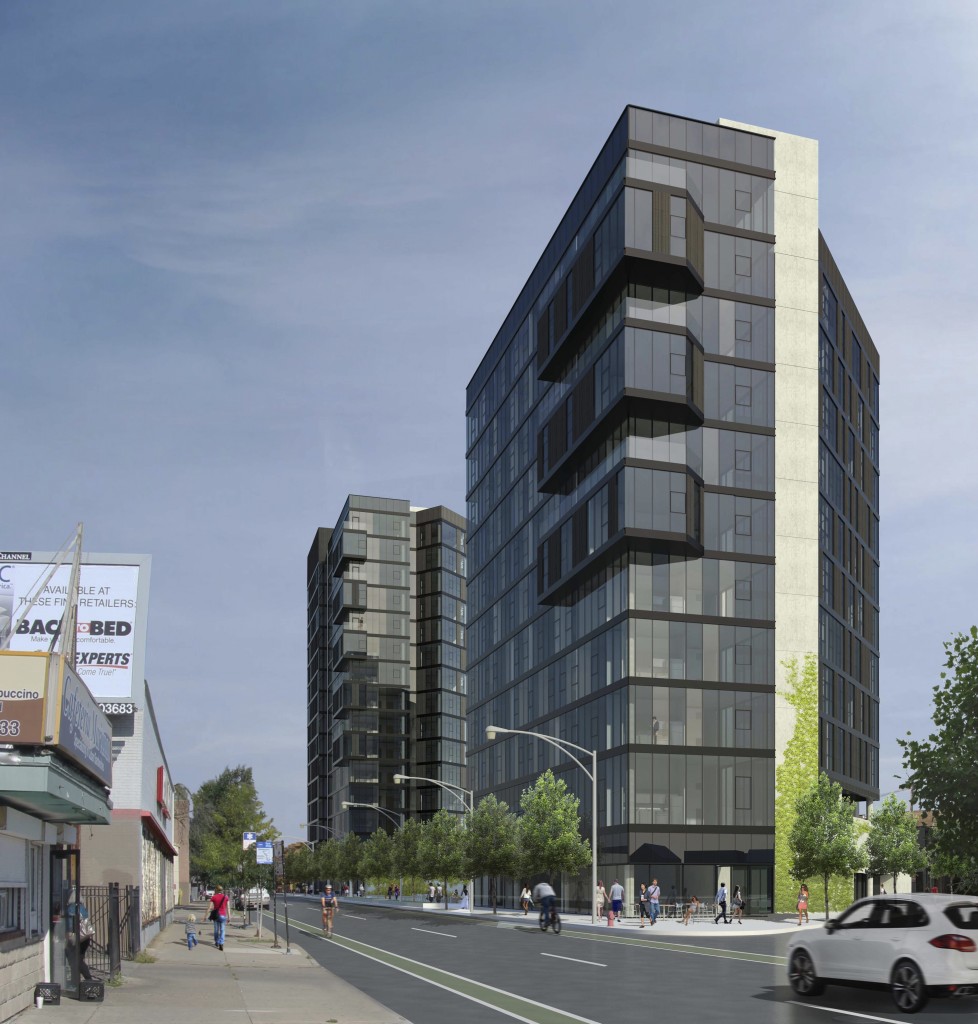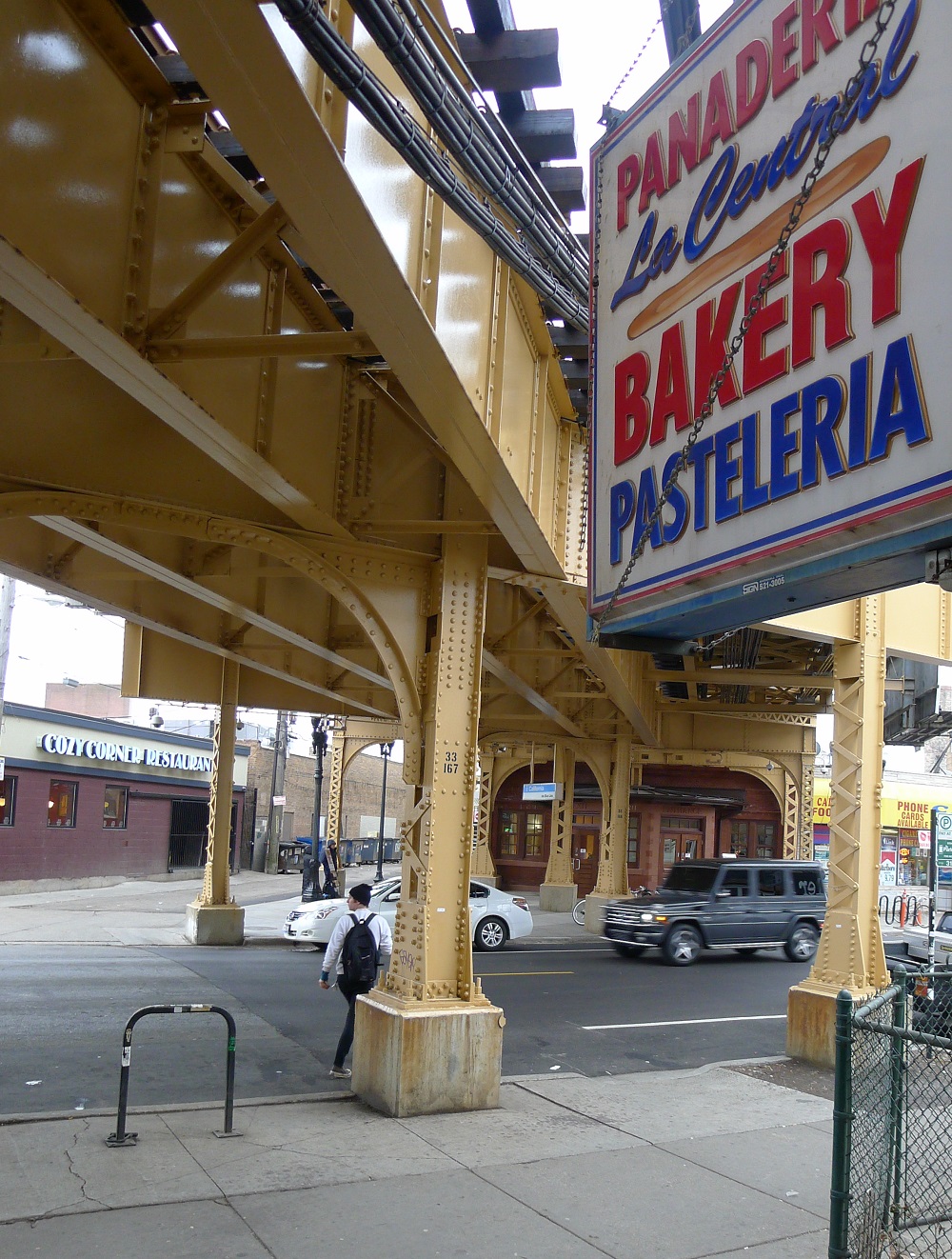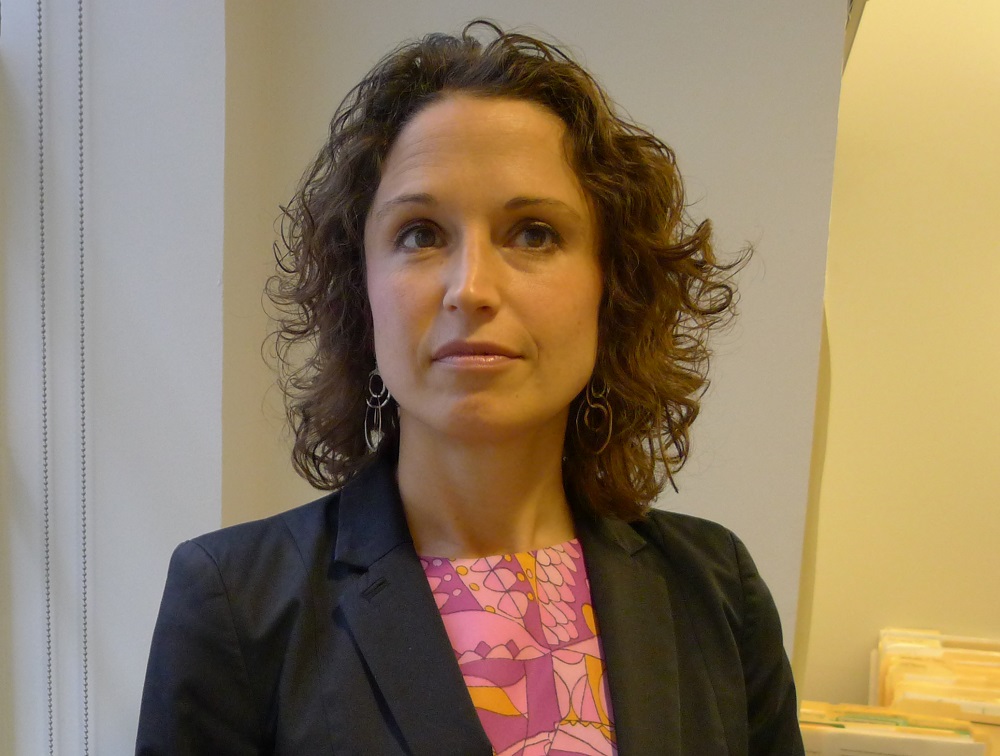Real-estate developer in hot area sees bright future — and displacement
By Chip Mitchell

Real-estate developer in hot area sees bright future — and displacement
By Chip MitchellAbout 150 people packed into a Latin American restaurant a few weeks ago to hear about a proposal for an apartment complex in Logan Square, a fast-changing neighborhood on Chicago’s Northwest Side.
At the invitation of the local alderman, real-estate developer Robert Buono got to make his case for a zoning change that would allow the project on a vacant parcel designated for something else.
Buono projected architectural renderings of the complex onto a screen facing the audience. They showed two glass towers — one 11 stories, the other 15 — that together would hold 254 residential units. He said tenants in two-bedroom apartments would pay as much as $2,700 a month.
“Everything is privately financed,” said Buono, 51, who became a developer after working for a Lincoln Park alderman in the 1980s, when that North Side neighborhood was transforming into a wealthy enclave. “We’re asking for no support from the city.”
Buono said his towers would be part of a trend, known as “transit-oriented development,” in which homes are built within walking distance of train stations, making it more convenient for residents to live without a car. “You’re going to have higher density, lower parking and taller buildings,” he said.
The dual-tower complex is among a half-dozen upscale residential developments proposed along Logan Square’s stretch of the Chicago Transit Authority’s Blue Line. That train line connects O’Hare International Airport with the city’s downtown, known as the Loop.

And another question kept coming up. How would such steep rents affect a neighborhood that still had many working-class residents, including tens of thousands of Latinos?
Buono said he had agreed to a condition, imposed by the alderman, that 10 percent of the units be reserved for affordable housing.
That led to more questions. A young man who grew up in Logan Square drew applause when he asked, “What is the amount of profit that you are going to make if this goes exactly to plan?”
Buono estimated that the $60 million project could net roughly $10 million or, he added quickly, it could lose that much. “That’s the risk that we take,” he said.
A follow-up question was how much profit there would be if the entire building were devoted to affordable units. Buono answered.
“There’s not a lender on the face of the earth that would loan me money to build the project,” he said. “I can’t build it inexpensively enough for the rents to support the costs of construction. It’s just not possible.”
Buono is not out to solve Chicago’s affordable-housing crisis on his own. But he said the project would help attract young professionals that would uplift Logan Square and the rest of the city. The people he has in mind would use the train to get to their jobs in the Loop. Or, Buono said, they would be “consultants that work out of town.”
‘I don’t want to move from here’
Not everyone in Logan Square likes the idea of bringing in those sorts of newcomers.
A few blocks from the proposed apartment complex, Andre Vásquez pulled up to his 10-year-old daughter’s school and slipped open the big door of his family’s car — an old Dodge Caravan. She climbed in and told him about a field trip her class took that day.
Vásquez, 41, makes his living as a DJ for parties and business events. His wife is a part-time nanny. They’re raising two kids in a two-bedroom Logan Square apartment about three blocks from the proposed towers.

The neighborhood’s rents have gone up because property values have increased as wealthier people have arrived. From 2011 to 2013, median sales prices of Logan Square homes jumped almost a third.
Vásquez said he had been displaced before — from a nearby neighborhood called West Town, where he grew up. “They built their condominiums and only people with money, and lots of money, move into them,” he said. “There’s no way people like myself or my parents or grandparents could ever afford it.”
Vásquez looked at his daughter in the van’s back seat and said he did not want her to go through the same thing. “I don’t want to move from here,” he said. “This is all she knows.”
This is textbook gentrification. And Buono, the real-estate developer, defends it.
Interviewed in his office, Buono said the towers would serve a basic need: “Developing communities that are going to be attractive to the future of the city of Chicago — so that the demographic that we’re addressing, the 18-to-35-year-olds — so that they want to move to Chicago, that they want to work in Chicago.”
Buono called the lack of development so close to the Blue Line station a missed opportunity for the city to boost its revenue. “We look at a property like that today that pays $29,000 in real-estate taxes because it’s vacant,” he said. “A new development there would produce $350,000-$400,000 a year.”
Buono said his project will benefit the entire Logan Square neighborhood. “Bringing 300-400 people to an area, that really is depopulated, starts to support a whole bunch of activities,” he said. “Those people living in those buildings support the businesses in the neighborhood.”
‘Natural and inevitable’
This reasoning is familiar to Marisa Novara, who directs the housing and community-development program of the Metropolitan Planning Council, a nonprofit advocacy group.
“Anyone in a neighborhood that has a lack of amenities — places to shop locally, strong schools — wants things to get better,” Novara said. “What they don’t want is to not be able to live there anymore once they do get better. Housing that is near transit should be available to everyone, not only the highest bidder.”

“There is a cost to concentrated poverty — education outcomes, health outcomes, crime, economic productivity,” Novara said.
Without a massive increase in federal funds for affordable housing, Novara said, cities such as Chicago must harness the private sector. That means setting up carrots and sticks so developers in hot neighborhoods include affordable units in their projects, she said.
For his Logan Square towers, Buono has already agreed to include the 10 percent. If his project is not scaled back, that would amount to 25 units. That leaves the other 225 to be rented for whatever the market will bear.
“If we achieve the rents that we’re suggesting that we can — and the landlord down the street in the two-flat decides to raise his rent as a result, primarily because the market says he can — could it cause a displacement of some people?” Buono asked. “The answer to that is yes.”
And if Buono’s project and the other Logan Square proposals materialized, he acknowledged, they would “alter the character” of the neighborhood. “This is a natural, inevitable trend that has happened in many neighborhoods in Chicago,” he said.
Chip Mitchell is WBEZ’s West Side bureau reporter. Follow him on Twitter @ChipMitchell1 and @WBEZoutloud, and connect with him through Facebook, Google+ and LinkedIn.